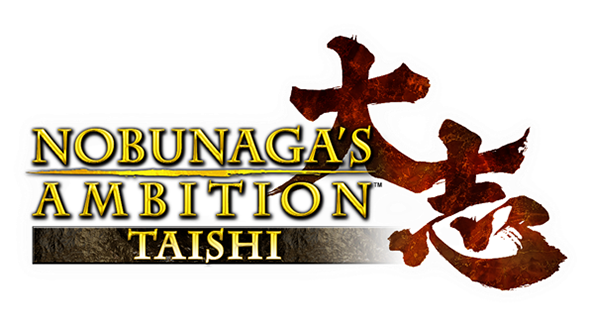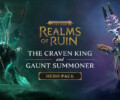
Developer: Koei Tecmo
Publisher: Koei Tecmo
Platform: PC, PS4
Tested on: PS4
Nobunaga’s Ambition Taishi – Review
Nobunaga’s Ambition is one of those games that has been around for an incredible amount of time. The very first game got released in 1983 (!) in Japan, and the first that was brought outside Japan as well originated from 1986. It was one of the first of its kind as an event-and-turn-based strategy game, event in this case also meaning historical accuracy, based on real history. The latest addition to the game series still carries on everything that was started back then. It’s Nobunaga’s Ambition Taishi.
Story
Essentially, the gameplay is the story of Nobunaga’s Ambition. There are lots of different characters who have their own ambitions a.k.a. goals in the game, but they all want to command and conquer Feudal Japan. You don’t know this because they tell you, but because this is what the game is all about! Pick a character and try to conquer everything. There are some different story parts involved during the gameplay where NPCs and events tell you things that are going on, but it’s barely there nor important for a (none-existent) large story. Any info that you will get is text-based, and the only big cinematic takes place before or while waiting at the menu.
Graphics
The graphics during the game mainly consist of a top-down view of the map of Japan. On this map you see everything happening you can possibly do. Depending on what actions you take the map view can change. If you start looking to trade, for example, the map turns blue. If your armies are fighting, you can choose to zoom in. The illustrations are recognizable Japanese, but otherwise, there is not much graphically very good about the game. Even when zoomed in to check land up close, it all looks rather barren. Once more, this game is way more about its gameplay.
Sound
Most of the game you will be stuck with (good) cinematic atmospheric music on the background while listening to a ton of selection clicks while picking what you want to do. Besides that there are some occasional battle or character sounds where an NPC has a line such as ”Follow me!”, but this is all. There is no more sound implemented than is necessary to maintain a strategic atmosphere and for this game that’s probably fine for the target audience it’s going for, which will be further explained in the gameplay section below.
Gameplay
Nobunaga’s Ambition Taishi is a historic event-based turn-based strategy game where you try to conquer Japan with, and fulfill the ambitions of, a character of your own choosing. Because of the historical accuracy, this actually means that choosing a general decides the difficulty of the game you start with. Each leader starts at a different location of Japan, with different already established possible allies, and a different amount of armies and bases at their command. If you start with number one to ten on the list of the ”biggest” in Japan, the game will start out easier, if you start with number 80 or even 93, you will barely have anything and will have to work your way up through all your enemies, making the game harder to win and requiring more strategy from the player’s side.
It feels like it’s important to note the bad side about Nobunaga’s Ambition Taishi before the rest of the gameplay is explained. You see, the biggest problem in Nobunaga’s Ambition Taishi is that there is little done about the specific target audience, making it rather inaccessible for most. It’s understandable that the history and strategy lovers are an aspect that the game grew its name upon, but by not updating certain elements to a game that fits 2018 more, it feels rather outdated. For one, an overload of buttons for what are essentially easy actions on an already flat top-down map screen, makes a bad user interface very present at all times. Instead of creating a more easy-accessible, open for all skill levels type of experience, every button feels like it’s overly complicated and creates a flow that withholds fun for the players. This idea is actually proven by the noticeable large number of tutorials given at the start of the game, which shouldn’t actually be necessary in the first place if the creators would have taken a more intuitive 2018 approach to deliver the game’s information through good design instead of getting stuck on the static origins of the game. Sure, there are some animations now where you can check out how your armies are fighting the enemies, and sure, the map looks a bit fancier, but overall the game is still flat, more text-based, and unclear from the start in what it allows you to do unless you read through everything three times.
On the other side, if you are an experienced player and you know what Nobunaga’s Ambition is all about, the game might feel a bit hollow in its choices. Like there’s just not enough to do. What the game basically boils down to, is a complicated game of Risk. You got cities that you can put to work to make money, and you make choices between i.e. using the population for either agriculture or militia. Too much militia means you won’t have the sufficient resources to last all year, too much agriculture and you are weak and will take too much time to expand your territory. Besides these ”simple” choices of managing your own cities, you can also make allies, declare war, trade to set up commerce, and slightly more. There is just enough to keep it interesting but sadly complicated, and not enough to make it really good because there is no real micromanaging involved. While you try to survive and manage, the essential goal remains to raise an army and claim victory over the other rulers of Japanese sections. So, combined with long hours of managing and surviving, as said before, a complicated game of Risk
There is some text involved, where the game asks you what you want to do. This actually makes up the best part of the game thanks to the rogue element. Even though you will mostly guess the outcome of your choices, when being asked what you want to do it feels like there is more to do than just growing an army that can overrun everything. When sieging an army, the game will often ask you what and how you want to battle. Do you want to view the battle up close? Do you want to move in faster which loses you more soldiers but will cost you less time? Once a year there will be a council informing you about situations and where you can basically pick certain bonuses that might help you out. This, combined with a skill tree, improves your own style of gameplay by granting you i.e. more powerful armies or an easier income. But because there are not many choices and events like in the Total War Game Series, the game stays adrift between being inaccessible for a large number of people and having not enough choices for the people who are actually looking for complicated micromanaging games.
Conclusion
Nobunaga’s Ambition Taishi sticks true to the foundation that was laid out in 1983, and that might also be the problem for this game. On one hand, the game is very tough to get into for new players by its complicated options and interface, on the other hand, it barely has in-depth micromanaging to keep advanced players interested. In the end, this addition to Nobunaga’s Ambition is more of a stretched-thin overly complicated version of Risk and needs a good fair look and possible overhaul if it doesn’t want to bury itself alive as a series. Hopefully, the creators will see Taishi as something to learn from and a warning for any future games coming out.
Nobunaga's Ambition Taishi - Review,











No Comments